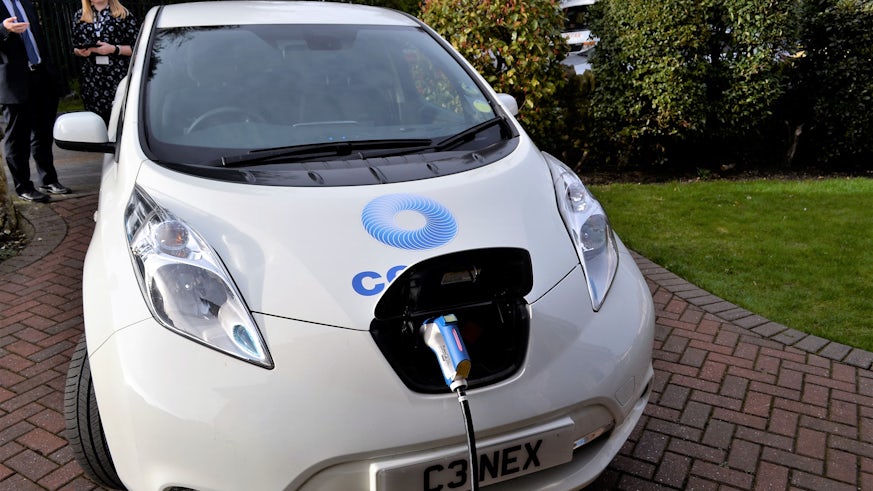Installation of the UK’s first domestic vehicle-to-grid unit for energy storage
22 Mai 2017

Vehicle-to-grid technology is an innovative system that is able to both charge an electric vehicle and discharge power back to the grid at times of peak demand. This installation is part of Ebbs and Flows in Energy Systems: a £1.8 million project funded by Innovate UK and the Engineering and Physical Sciences Research Council (EPSRC).
In this project, led by Cenex (UK’s first Centre of Excellence for low carbon and fuel cell technologies), Cardiff University is leading the development of a cloud-based Virtual Power Plant. The project also represents a successful collaboration between the Schools of Engineering (represented by Dr Liana Cipcigan) and School of Computer Science and Informatics (represented by Prof Omer Rana).
Virtual Power Plants use electricity storage assets such as static batteries or vehicle-to-grid units to flatten the peak demand profile of a building, to manage demand of the building during triad peaks and to enable the participation of the building manager in the grid balancing services market through demand side response.
The overall goal of the project is to manage, improve and reduce the electricity use of UK buildings, from single properties through to large commercial premises. A further goal is to evaluate the impact that the technology being developed will have on local energy systems through computational modelling, physical demonstrations and engagement with the public.
The project involves a collaborative approach with contribution from both academic and industrial partners. The vehicle-to-grid unit has been developed by Potenza Technology. The control unit is being developed by Moixa Technology while the Virtual Power Plant by Cardiff University.
Alongside flattening the energy demand of a building, vehicle-to-grid units create significant economic savings. According to commercial system modelling carried out by Cenex, Manchester Science Park could save £14,000 per annum through using just 6% of their car park. In addition, bidding into energy markets such as the wholesale electricity market or short term operating reserve could provide additional income equivalent to around £60 per month for each vehicle enrolled into the scheme.
Dr. Liana Cipcigan, Reader at Cardiff University, said, “Mixed energy sources will power our economy in the future. The cloud-based Virtual Power Plant installed in the Ebbs and Flows of Energy Systems represents an important development for the UK energy sector. The success of this installation will have far-reaching impact on future energy innovation and diversifying the country’s energy mix.
"The cloud-based VPP solution is a collaborative work between the School of Engineering, represented by myself and the School of Computer Science and Informatics, represented by Prof. Omer Rana. In this project, we are exploring novel edge-computing capability that is able to take account of Internet of Things devices that can exist at the edge of a data network. Our Computer Science colleagues have also explored cybersecurity threats that may occur in such a system, and potential impact this is likely to have on the operation and resilience of the system.”